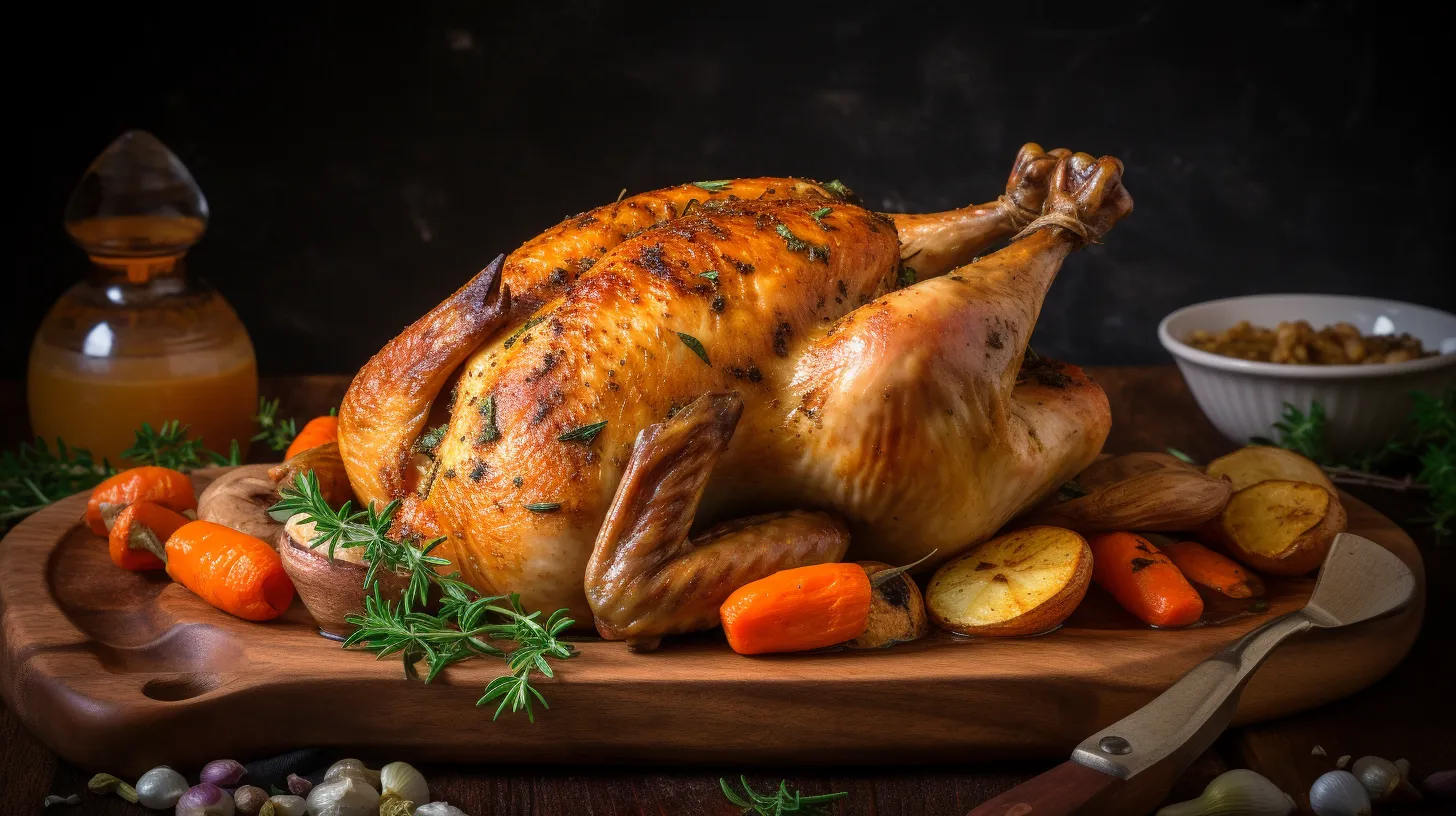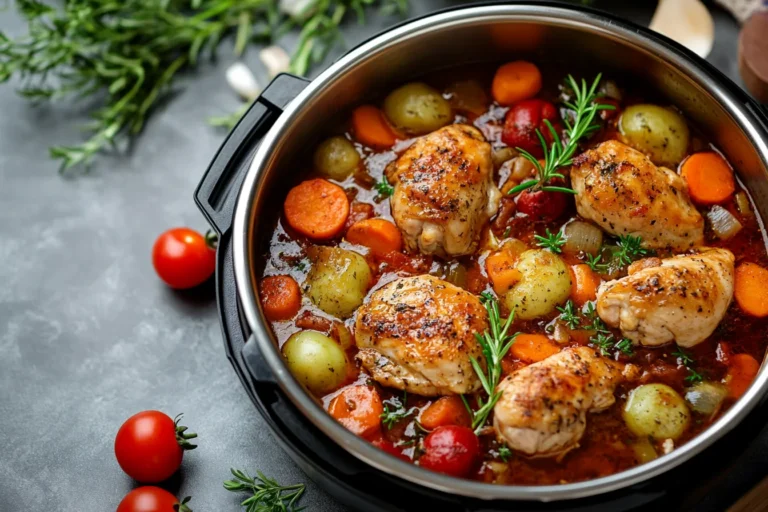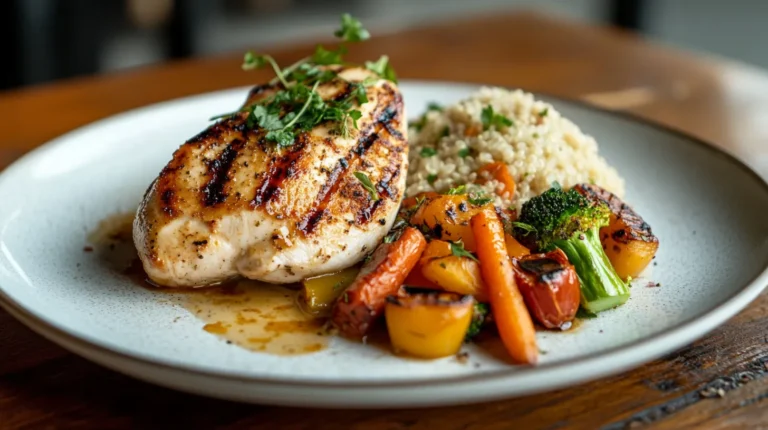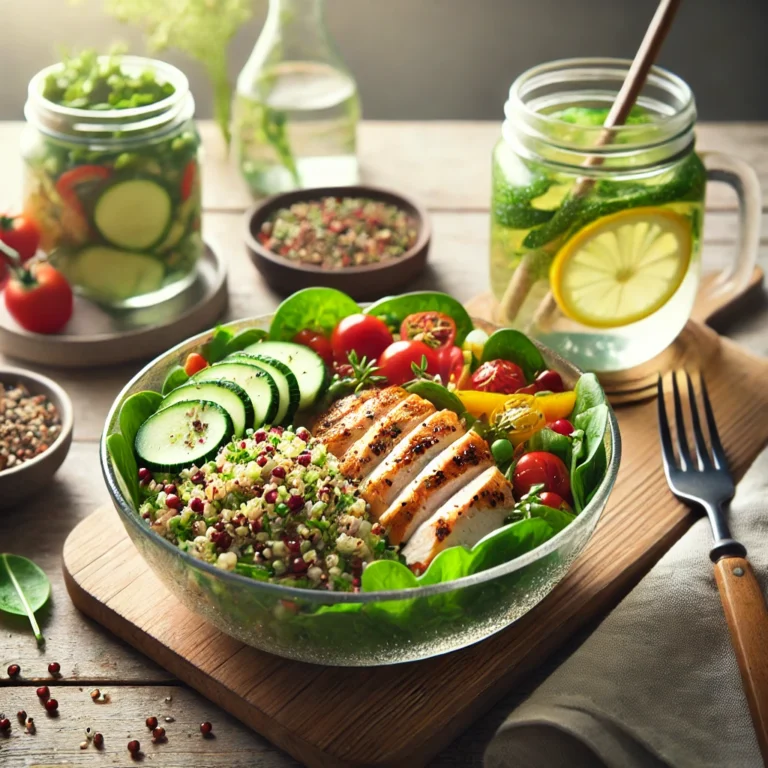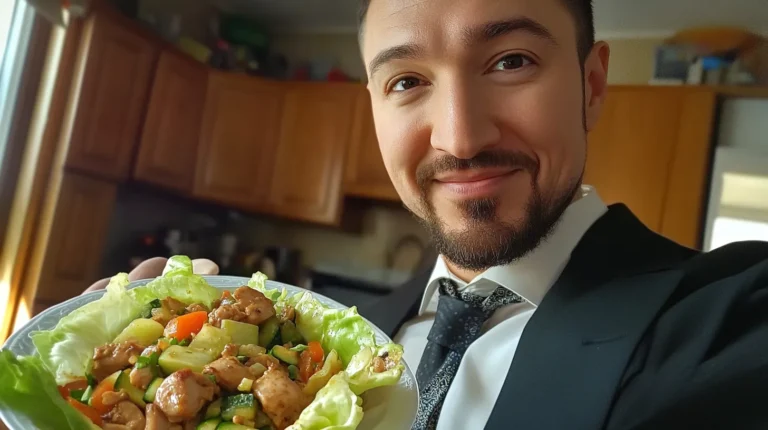Slow Roasted Chicken – 5 Secrets for a Juicy & Crispy Roast
Are you searching for a recipe that guarantees succulent, fall-apart-tender chicken every time? Look no further. This guide will teach you everything you need to know about slow roasted chicken—a method that ensures every bite is flavorful and perfectly cooked. Slow roasting is not just a cooking method; it is a time-honored tradition that yields superior results. By taking your time, you allow the chicken to retain its juiciness while creating a rich depth of flavor and an irresistibly crispy skin. From choosing the right ingredients to troubleshooting common problems, this comprehensive guide will transform your cooking skills. Whether you are hosting a special occasion or preparing a family dinner, slow roasting is a foolproof way to impress.
To ensure both safety and perfection in cooking, familiarize yourself with the USDA’s recommended internal temperatures for poultry. It is essential to meet food safety standards while achieving optimal taste. Additionally, understanding how slow cooking enhances flavors can elevate your technique, as the science of slow roasting is key to unlocking incredible textures and aromas.

Table des matières
Why Choose Slow Roasted Chicken?
Slow roasting is more than just a way to cook chicken—it’s a culinary technique that transforms an ordinary dish into something extraordinary. By cooking at a low temperature over an extended period, slow roasting ensures that the meat stays incredibly tender and juicy. This method allows the natural flavors of the chicken to develop while preventing the risk of drying out the meat. When done correctly, the result is a beautifully golden bird with fall-off-the-bone tenderness.
Unlike traditional high-temperature roasting, slow roasting minimizes the chance of overcooking the meat. Instead of rushing the process, this method takes advantage of time to evenly cook the chicken. As a result, every bite is full of flavor. The crispy, golden-brown skin is an added bonus, achieved without the risk of burning. For anyone seeking consistency, slow roasting is the perfect solution.
How to Prepare the Perfect Slow Roasted Chicken
Choosing the Right Ingredients
Creating the best slow roasted chicken begins with selecting high-quality ingredients. The star of the dish, of course, is the chicken. Opt for a whole chicken weighing between 4 and 5 pounds. This size allows for even cooking, ensuring that both the breast meat and the thighs are done to perfection. You can also choose free-range or organic chicken for better flavor and a healthier option.
Next, focus on the seasonings. Fresh herbs like thyme, rosemary, and parsley add an earthy, aromatic touch, while spices like paprika or garlic powder enhance the overall flavor profile. Pair the chicken with vegetables such as potatoes, carrots, and onions. These not only soak up the flavorful juices during cooking but also serve as the perfect side dish.
When it comes to keeping the chicken moist, olive oil or melted butter is essential. These fats help the skin achieve a golden, crispy finish while locking in moisture. For health-conscious cooks, a light drizzle of olive oil can work just as well.
Are you looking for inspiration for your side dishes? Check out high-protein lunch ideas from Nutrients Recipes to pair your chicken with nutrient-dense meals that complement its rich flavors.
Essential Equipment
To achieve flawless results, having the right tools on hand is critical. First, you’ll need a sturdy roasting pan. A pan with a rack is ideal, as it elevates the chicken, allowing heat to circulate evenly around it. This prevents the bottom of the chicken from becoming soggy and ensures that the skin crisps up perfectly.
A meat thermometer is another must-have. Slow roasting relies on precision, so it’s important to monitor the chicken’s internal temperature. Insert the thermometer into the thickest part of the chicken, usually the breast or thigh, and ensure it reads 165°F before removing the bird from the oven. Lastly, keep aluminum foil handy. Covering the chicken if it begins to brown too quickly can save it from overcooking or burning.

Step-by-Step Cooking Guide
1. Preparation
Start by rinsing the chicken under cold water to remove any residual juices, then pat it dry with paper towels. Removing excess moisture is crucial for achieving crispy skin. Rub the entire bird generously with olive oil or melted butter, ensuring all surfaces are coated. This step helps create a rich golden crust during roasting.
Season the chicken both inside and out. Generously sprinkle salt, pepper, and your chosen herbs and spices. Don’t forget to stuff the cavity with aromatics like garlic cloves, lemon halves, or fresh sprigs of thyme to enhance the flavor from within.
2. Preheat the Oven
Set your oven to 300°F, the optimal temperature for slow roasting. Unlike higher temperatures that risk drying out the meat, this low temperature ensures that the chicken cooks evenly and retains its natural juices.
3. Roasting the Chicken
Place the chicken breast-side up on the rack in your roasting pan. Surround it with your prepared vegetables for added flavor. Roast the chicken uncovered for approximately 2.5 to 3 hours. The exact cooking time will depend on the size of the bird. During this time, baste the chicken every 30 minutes with its juices. This helps to keep the meat moist and adds a layer of flavor to the skin.
4. Resting
Once the chicken has reached an internal temperature of 165°F, remove it from the oven. Allow it to rest for 15 to 20 minutes before carving. Resting is an important step that allows the juices to redistribute throughout the meat, ensuring every bite is flavorful and tender.
Pro Tips for Success
Avoid common mistakes by following these expert tips:
- Dry the chicken thoroughly: Moisture on the skin prevents it from crisping. Pat it dry with paper towels before seasoning.
- Elevate the chicken: Use a rack to keep the bird off the pan’s surface. This prevents sogginess and ensures even cooking.
- Rotate the pan: If your oven has hot spots, rotate the pan halfway through cooking to ensure consistent browning.
Flavor Variations to Try
One of the best things about slow roasted chicken is how easily you can customize its flavor. Experiment with these variations:
Classic Herb-Roasted Chicken
Keep it simple and timeless with olive oil, salt, garlic, rosemary, and thyme. This combination creates a fragrant, golden roast that pairs beautifully with mashed potatoes or roasted vegetables.
Mediterranean-Inspired Roast
Infuse your chicken with the bright flavors of the Mediterranean. Rub it with oregano, lemon zest, garlic, and paprika. Surround it with cherry tomatoes and olives for a colorful and flavorful presentation.
Spicy Cajun Roast
For those who love heat, coat the chicken in a blend of Cajun seasoning, smoked paprika, cayenne pepper, and garlic powder. Serve with cornbread and sautéed greens for a Southern-inspired meal.
Looking for gluten-free side dishes to serve with these variations? Visit gluten-free meals guide for complementary ideas.
FAQs About Slow Roasting Chicken
How long does it take to slow roast a chicken?
On average, it takes about 2.5 to 3 hours at 300°F to slow roast a 4 to 5-pound chicken. The key is to check the internal temperature, which should reach 165°F in the thickest part of the meat.
Can I use a slow cooker instead of an oven?
Yes, you can use a slow cooker, but the results will differ. While slow roasting in the oven creates crispy skin, a slow cooker results in very tender meat but lacks the crisp texture.
What’s the ideal internal temperature for slow-roasted chicken?
The internal temperature should reach 165°F in the thickest part of the breast or thigh. Use a meat thermometer for accuracy.
Health Benefits of Slow Roasting
Slow roasting offers several health benefits, making it an excellent choice for cooking chicken. By using a low temperature, this method retains more nutrients compared to high-heat cooking. Additionally, you can control the amount of fat used, making it a healthier alternative to frying or grilling. The slow roasting process also allows the natural flavors of the chicken and vegetables to shine, eliminating the need for excessive seasonings or sauces.
If you’re interested in other cooking methods that maintain nutrients, check out this healthy Instant Pot chicken recipe guide.
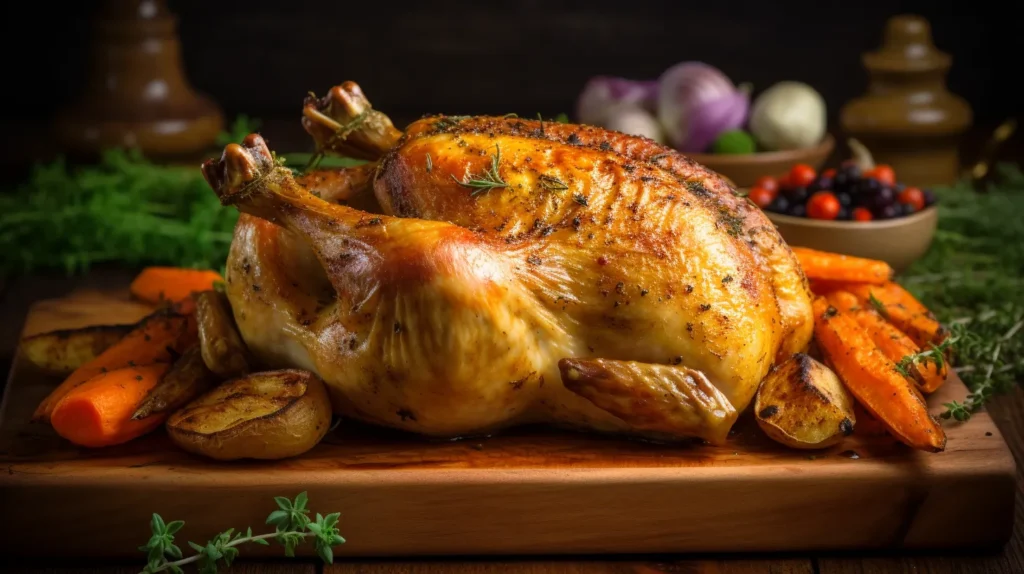
Conclusion
Mastering the art of slow roasted chicken is a rewarding experience for any home cook. This method not only ensures consistently delicious results but also allows you to customize flavors to suit any occasion. Whether you stick to the classic herb roast or venture into Mediterranean or Cajun-inspired variations, slow roasting will never let you down.
With the right preparation, tools, and knowledge, you can create a centerpiece dish that will impress family and friends. Pair your chicken with high-protein sides or gluten-free dishes for a balanced, wholesome meal. Start your journey into slow roasting today and discover just how versatile and flavorful this cooking method can be! Your perfect roast chicken awaits!

